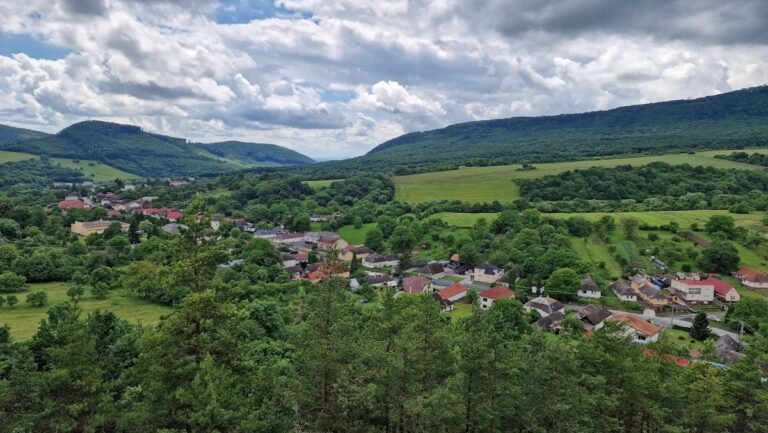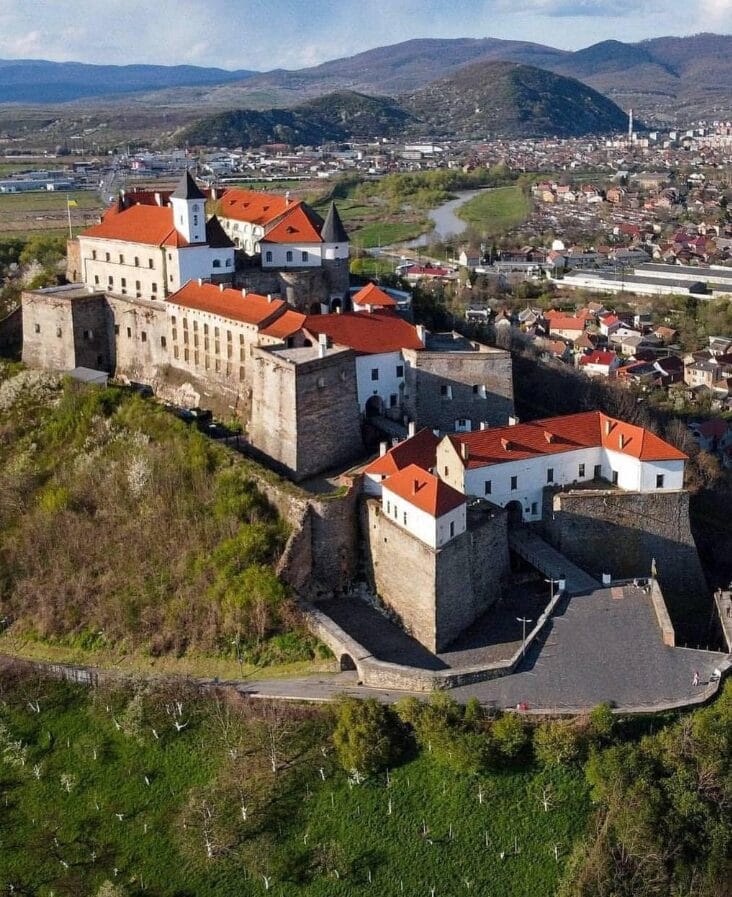Uzhhorod Castle: A Historic Fortress in Ukraine
Visitor Information
Google Rating: 4.5
Popularity: High
Google Maps: View on Google Maps
Official Website: www.zkmuseum.com
Country: Ukraine
Civilization: Unclassified
Remains: Military
History
Uzhhorod Castle is situated in the city of Uzhhorod in what is now Ukraine. The site originated in the early medieval period, initially developed by the White Croats, a Slavic tribe inhabiting the area. The first fortress here was a wooden structure built on a hill overlooking a settlement. During the 9th century, this stronghold was controlled by Prince Laborec, ruler of the local principality. His dominion lasted until the arrival of Hungarian tribes around 898 AD, who destroyed the wooden fortress and killed Laborec near the river that now bears his name.
Following this early period, the region came under the administration of the Ung county, part of the Kingdom of Hungary, during the late 10th to early 11th centuries. It was in this era that a stone castle replaced the original wooden fortification. This stronger castle successfully resisted attack during a Pecheneg raid in 1086 led by Khan Kutesk, indicating its substantial defensive capabilities.
The devastating Mongol invasion of 1241-42 prompted the Hungarian king Béla IV to encourage the reinforcement of fortresses throughout the kingdom. As a result, Uzhhorod Castle saw significant stone fortification work during the mid-13th century.
A major phase in the castle’s history began in 1312 when King Charles Robert of Anjou granted the castle and its lands to the Italian Drugeth family for their loyalty during a rebellion. The Drugeths maintained possession of the castle for approximately 350 years. Under their stewardship, the castle underwent substantial rebuilding in the late 1500s. This renovation introduced bastions designed by Italian engineers to enhance defense against firearms, reflecting military advances following the introduction of gunpowder weapons.
During the early 18th century Rákóczi War of Independence (1703–1711), Uzhhorod Castle was besieged and surrendered in 1704 to a group of Rusyn peasants led by Ivan Betsa. In 1707, the castle served as a meeting place for diplomats receiving envoys from Russia’s Peter I, marking its importance as a political center during this tumultuous period.
After the conflict, the castle came under Habsburg control. Empress Maria Theresa later transferred it in 1775 to the Mukachevo Greek Catholic Eparchy, which used the site to establish a theological academy. This transition brought alterations including minor renovations and the removal of the knight’s hall.
Since the mid-20th century, Uzhhorod Castle has been preserved as a regional museum, with its long history of military, political, and religious roles well documented and studied.
Remains
Uzhhorod Castle occupies a roughly four-sided irregular plot shaped by the terrain of Castle Hill, covering about 8.5 hectares with an adjoining garden spanning 6 hectares. The defensive walls are constructed from stone, rising up to 10 meters tall and reaching thicknesses of 2.5 to 3 meters. These walls are encircled on three sides by a deep moat, 8 to 10 meters in depth, which was historically crossed by a drawbridge equipped with a chain mechanism for raising it, the latter still evident through preserved chain holes.
Each corner of the fortification features rhomboid-shaped bastions, measuring between 10 and 15 meters high. These bastions are edged with white stone tiles arranged in a square pattern, reinforcing their structure. The northern section of the castle is particularly robust, guarded by a high, smooth wall devoid of openings like embrasures. At this side stands a keel-shaped bastion, providing additional strength against assault.
The main palace, located on the northeast side of the hill, is a strict rectangular, two-story building crowned with square towers at each corner. These towers have thick walls and include embrasure openings on their upper floors, originally designed to accommodate firearms or small arms defense. Functioning as the citadel within the fortress, the palace is surrounded on three sides by another moat crossed by an eastern drawbridge. Its northern wall is positioned atop a steep cliff, making any attack from this direction virtually impossible.
Beneath the palace are expansive underground casemates, which served multiple purposes: storage during times of peace and shelter during sieges. The palace dungeon housed a prison and a chamber used for torture, evidencing the site’s role in law enforcement and control.
Archaeological digs have uncovered the foundations of a 13th-century church dedicated to St. George, an important religious building referenced in a 1248 document. Today, the remains of this church have been conserved and partially integrated into the museum setting, though the structure has not been fully rebuilt.
Within the castle courtyard are relocated bronze sculptures, including a mythical Turul bird, historically connected with Rákóczi’s military success. Also present are remains of a bronze fountain portraying the “Resting Hermes,” a Roman replica of a Greek original by the sculptor Lysippos. This fountain sculpture is currently damaged and awaits restoration. Additionally, the courtyard contains busts of Count Miklós Berchenyi and Countess Kristina Csáki, figures associated with the castle ownership near the 17th and 18th centuries; these were installed in the early 21st century.
The castle’s combination of Renaissance architectural styles typical of northern Hungary and specialized fortifications adapted for gunpowder warfare reflects its evolution from medieval fortress to an artillery-resistant stronghold.










